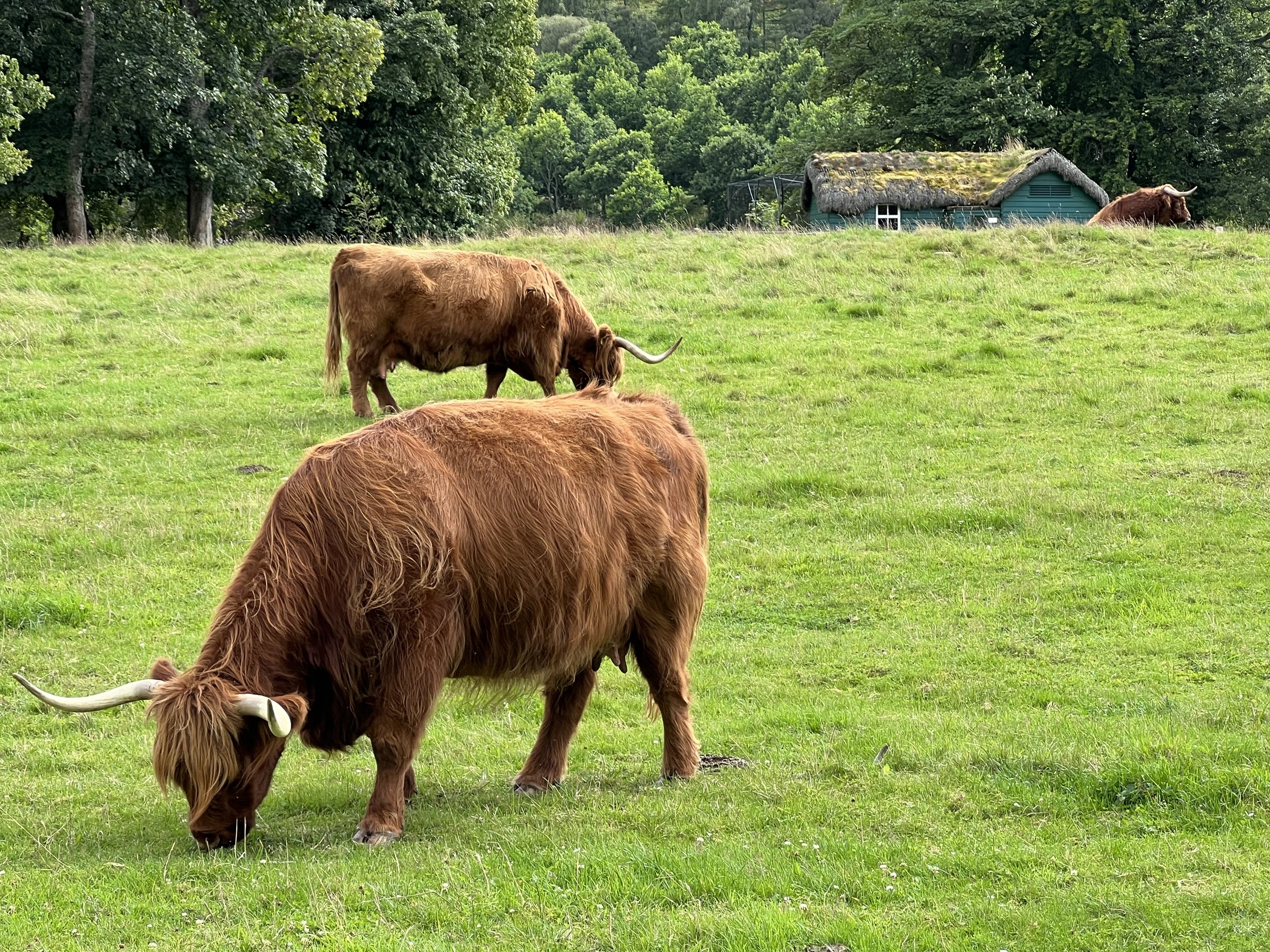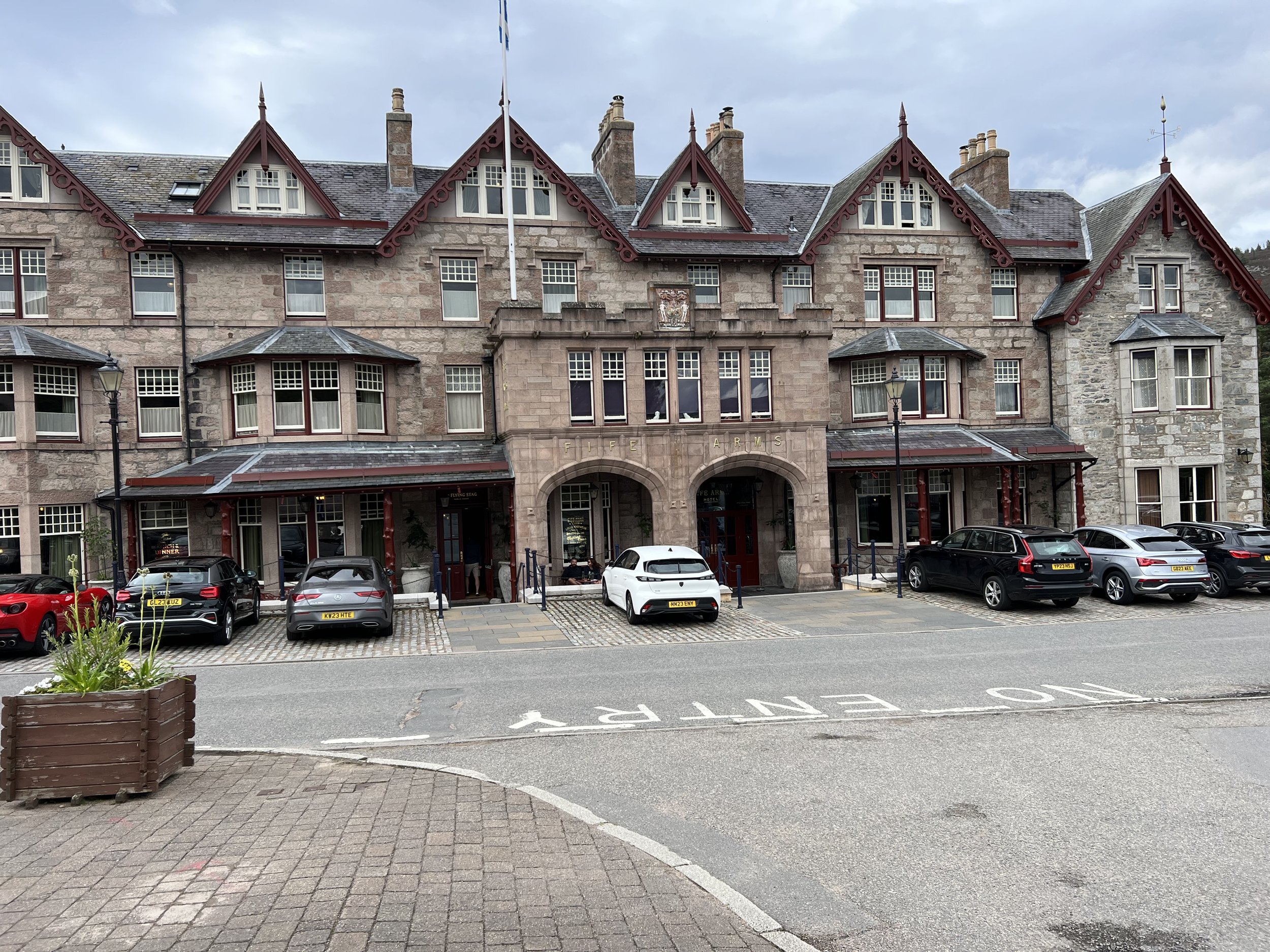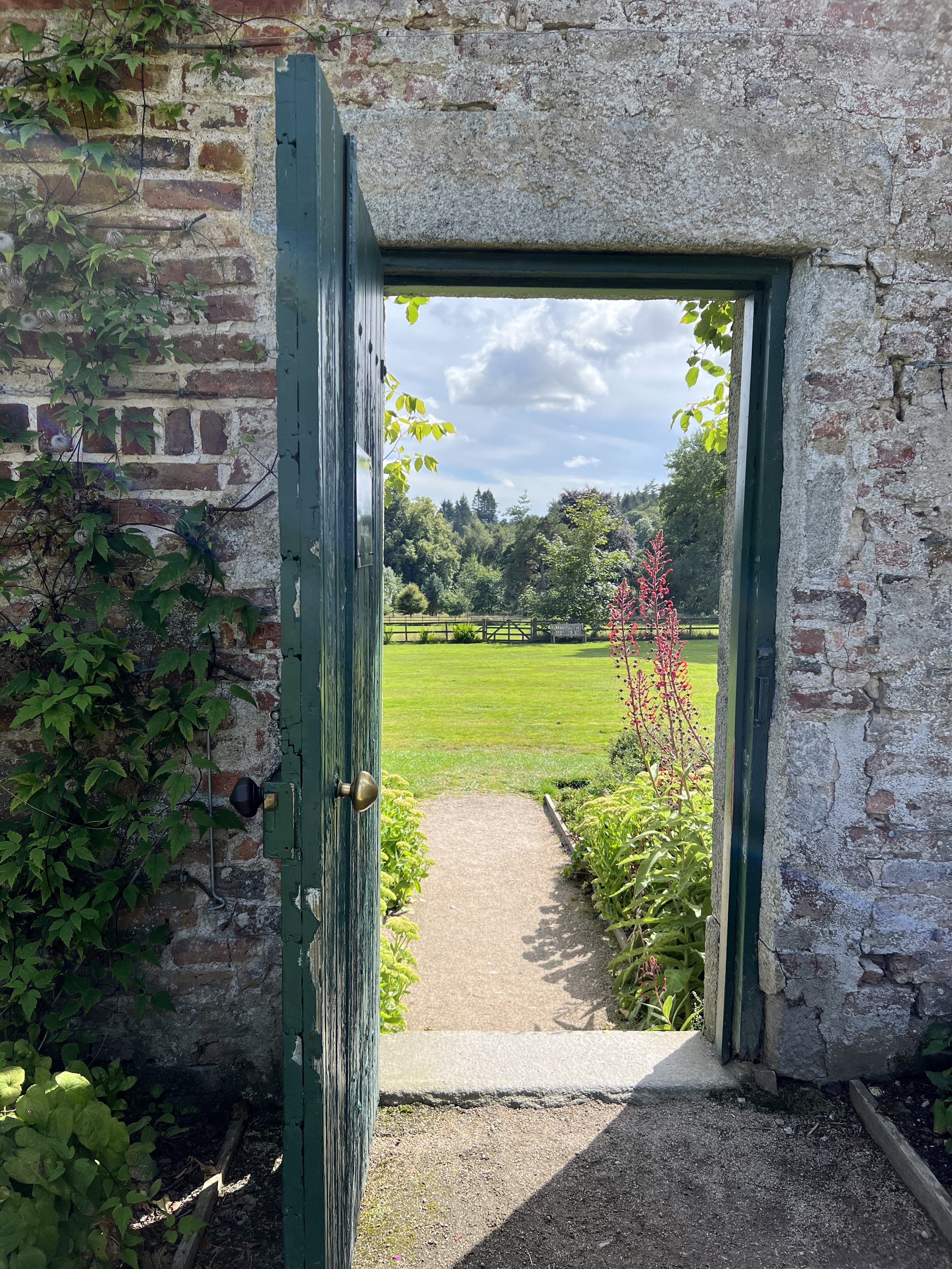Aberdeen
“Dear to the seabird is her rocky ledge.
Dear to the Islesman is the World’s Edge.”
Farewell Shetland
We checked-out of our Lerwick, Shetland house on Friday morning (Aug 11) excited to be starting our journey home, yet dreading the 29 hours that stood between checking-out in Lerwick at 10 am and checking-in in Aberdeen at 3 pm the next day.
Our NorthLink ferry did not depart Lerwick until 5:30 pm so we firstly had over 7 hours to while away in a tiny town we had already explored.
With this in mind, we had intentionally left a visit to the Shetland Museum for this morning.
Given Shetland’s size, I did not expect much from their museum—which is why I was very pleasantly surprised by the quality of the exhibition spaces.
Three fun take-aways from our museum visit:
One—The docks pictured in both of the images above are Lerwick’s original docks. Looking at all those ships and their masts. I can imagine walking those docks—the chaos amidst the throngs of boats and people, the smells, the sketchy people.
Standing on the original stone pier you feel the energy of this bustling port, from swashbuckling captains to dangerous smugglers—very Pirates of the Caribbean—kind of Captain Jack Sparrow meets My Little Pony.
It all began in the 17th century, when Dutch herring fishers began their fishing operation here, giving Shetlanders money in return for knitted goods.
By the early 19th century Lerwick had become Shetland's capital, serving fishers, whalers, traders, and smugglers. Lerwick's first harbor works opened in 1886, and the herring fishery boomed until 1914.
Two—In so many respects, Shetland is Scottish in name only. The Vikings came to Shetland 1,200 years ago. Their sudden arrival marked the beginning of a chaotic time that dramatically changed every aspect of native island life.
Viking raiders came first—clearing out the local people, and taking their land. Settlers followed, setting up house and becoming farmers and fishermen. Viking beliefs, language, and architecture replaced the Pictish culture and way of life.
Shetland later became part of Norway, so many Shetlanders spoke a Scandinavian language, and all their traditions—their folklore and place names, buildings, and farming methods—came from the east side of the North Sea.
Then, in 1469, Princess Margrethe of Denmark was married to King James Ill of Scotland. The Danish king was short of money for her dowry, so he pawned Orkney and Shetland to the Scots instead—if Denmark paid the money they would get the islands back.
The Danes tried many times during the next two hundred years to get Orkney and Shetland back, but they always failed. And that is how the islands became part of Scotland. Wild!
Three—The funeral for the famous explorer Sir Ernest Shackleton was held in the Norwegian church at Grytviken, South Georgia in March 1922, with 100 Norwegian and British whalers in attendance. I was very intrigued to read that all six pallbearers were Shetlanders from Lerwick.
After the museum we wandered Lerwick, got soaked as the rain came in, sat in our car as the rain really came in, and read books until we could stand it no longer.
We ate an early dinner at Golden Coach and then arrived early at the NorthLink office.
You may recall I somehow managed to only book our car onto the first of the three legs on the NorthLink ferry. We were set to have our car placed on their cargo ship, which would arrive in Aberdeen about an hour after we docked on the regular passenger ferry.
We talked to a representative at the Northlink terminal, who then radioed the loadmaster. It didn’t take too long for the loadmaster to advise that they could fit our car onto the passenger ferry with us, so we wouldn’t have to mess with the cargo ship after all. Outstanding!
Our ferry departed right on time at 5:30 pm. (Cruise ships like the one above arrived and departed Lerwick almost every day.)
We dropped off stuff in our cabin, took Stugeron (i.e.: European Dramamine), and headed up to use our free drink vouchers to really help us 🛌 💤.
Aberdeen, Scotland
The ferry journey to Aberdeen is 13.5 hours because the ferry docks first in Orkney (just before midnight) to off-load Orkney-bound passengers and onboard Orkney-to-Aberdeen passengers.
We both slept sporadically (seas were pretty mild), and drove off the ferry onto the streets of Aberdeen around 8 am.
We parked in the long-term parking structure closest to our apartment (parking was not included, as has been the case with most city locations). Thankfully, parking was very near a mall.
We got coffee, we shopped, we read, we went to the Apple Store to work out an issue with my phone, we had lunch—anything to kill the 7 hours until we could check-in to our new place. (The pin above is at our apartment. You can also see the blue dashed line from the ferry.)
The waiting was painful, and all the while our heads were somehow still foggy from the Stugeron motion sickness medicine—continuing to mentally dip and sway with the motion of a boat we had long since disembarked.
The icing on the cake: when it was finally time to check-in, we had to leave the parking structure, park outside our apartment, off-load all our stuff, and then schlepp everything up three flights of stairs!
😩 😩 😩
Then I had to drive the car back to the parking structure and walk back to our apartment (while Amanda waited with our luggage at the base of the stairs).
Oh, and did I mention, our bedroom windows faces a pub across the street—again?
Did I mention it’s Saturday night—again?
Did I mention that despite being on the fourth floor, old single-pane windows do almost nothing to diminish the sounds of music and yelling?
Yes, I’m a sniveling baby!
And home is looking soooo good right now! 🏡
Now that I’m done whinging, you can take a quick video tour of our Aberdeen apartment: https://www.youtube.com/watch?v=z8IZ9UYzESE
Driving to Balmoral
Our first full day in Aberdeen was Sunday (Aug 13). Partially recovered from the trauma of travel, we headed off for a comparatively easy hour-plus drive to Balmoral Castle.
To get to Balmoral Castle, we had to drive back into the Cairngorms National Park, this time from the east. We previously drove through the park along the west when Jeff and Madi were here.
If the heather wasn’t enough of a clue, the sign welcomes you to the Scottish Highlands.
Way back on our Wordsworth post, I introduced you to the AA roadside telephone box (“Your 4th Emergency Service”).
When a list was compiled back in 2014, only 19 roadside boxes remained. Well, I found my second box, this was was on A93: Box Name: Campus O'may. Telephone Number: Dinnet 215.
Balmoral Castle & Estate
We visited Balmoral Castle on the 13th; the last day to visit was the 16th. 😅 (BTW, we’ve recently learned the Hogwarts Express train that we took from Fort William, over the Glenfinnan Viaduct and back, was shut down about three weeks after our trip. We just made it on that one too! 😅 Why did it shut down? Some safety concerns about the bridge. Nothing too important!)
“All seemed to breathe freedom and peace, and to make one forget the world and its sad turmoils.”
The Balmoral estate was purchased for Queen Victoria by Prince Albert in 1852, after the couple fell in love with the local countryside.
Ever since, it has been passed on to successive generations of the royal family, where the family holidays every summer. It is also where Queen Elizabeth II died.
We visited the estate’s garden first. You could smell these sweet peas several feet away—absolutely amazing! We so wish we could grow these in Paso.
Another picture-perfect day in the Highlands.
“The kiss of the sun for pardon,
The song of the birds for mirth,
One is nearer God’s Heart in a garden
Than anywhere else on earth.”
Flowers are grown here in this greenhouse and then placed in arrangements throughout the house during family visits.
The gates leading from the garden to the house are adorned with the initials of King George and Queen Mary, Queen Elizabeth’s parents.
The Royal Banner of the Royal Arms of Scotland flown as the King is not in residence. When His Majesty is in residence, the Royal Standard of the United Kingdom is flown.
As was typical of many residences constructed at the time, the downspouts include the date the couple first occupied the residence and includes a cypher with the overlapping letters "V” and “A” for Queen Victoria and Prince Albert.
The sunken garden.
Finally some Highland Coos on the Balmoral Estate.
Look at this little baby!
This bronze, life-size statue of a wild boar seated on its haunches, was erected at the castle circa 1855 and painted in 1929. Its design is after an example in Florence (possibly at Palazzo Signoria).
The boar was copied in the Harry Potter films and adorned the gates to Hogwarts Castle.
Braemar
After Balmoral, we drove further west into the park to the small village of Braemar, where we stepped into the Flying Stag pub inside the Fife Arms Hotel to enjoy a wee dram.
Check out the wings on that stag!
After not getting a dram at the Highland Park distillery on Orkney, this was a sign (both literally and figuratively 😂)! A “measure” of whisky is an intriguing topic you can explore here. In Ian Rankin’s first novel Knots and Crosses, DS Rebus visits a pub and orders a double and the bartender warns, “This is a quarter-gill pub,” meaning their “measure” of a dram is larger than most and a double is “…a descent size a measure.”
My Highland Park was delicious. Amanda had a dram of Macallan 12-year sherry cask and loved hers as well.
I can think of few better places to imbibe a great Scotch whisky than inside the Fife Arms—absolutely, bloody amazing! These are the moments you try so hard to hold onto; we’ll never forget it!
As we were getting back into the car, I finally spotted a red squirrel!
You go Little Red!
One final stop: the permanent home to the Braemar Gathering Highland Games Centre. No games happening today, but proud to be standing at the site nonetheless.
Castle Fraser
The origins of the Fraser family name are somewhat of a mystery. The earliest recorded versions of the name, from the 12th century, are de Fresel, de Friselle, and de Freseliere, which appear to be Norman; however, they have never been found in Normandy itself.
Nevertheless, it is presumed the Frasers first arrived in Britain after the Norman, William the Conqueror, defeated King Harold at the Battle of Hastings in 1066.
Castle Fraser is the most elaborate Z-plan castle in Scotland. Z-plan castles have a strong central rectangular tower with smaller towers attached at diagonally opposite corners.
In this case the round tower at the distant left rest diagonally opposite the rectangular tower with the four turrets at the right.
The inner courtyard at the back of the castle is the most recent part of the castle.
The fourth sword from the left was carried by Charles Fraser during the Battle of Culloden on April 16, 1746. He was badly wounded during the battle and, when found alive the following day, killed by a government solider.
The blade has the name Fraser engraved on the blade, which is how the sword ultimately made its way back to Castle Fraser, where we were able to see it 277 years after the battle.
An amazing 16th century kitchen.
This pot includes an “Apotropaic mark,” intended to ward off witches.
The fireplace with a portrait of General Alexander MacKenzie Fraser.
Recall that Jamie’s full name in Outlander is James Alexander Malcolm MacKenzie Fraser. And now you know where Diana Gabaldon got the name.
The ceiling post from which this lamp is hung has the initials MF for MacKenzie Fraser. It also includes images of strawberry plants as the surname Fraser is believed to derived from the French "fraisse," or strawberry.
On top of the round tower with incredible views of the great lawn and the walled garden.
The walled garden.
At the top of the Round Tower’s spiral staircase.
In the chapel, a hidden door in the floor, probably used to conceal Catholics vestments.
This artifact in the chapel is one of the oldest items in Castle Fraser. It is believed to be 14th or 15th century—made before the Reformation. The sheep and flag are known as the Agnus Dei, which means the Lamb of God. It was regarded as a holy object or a talisman—widely believed to be imbued supernatural power.
In the Laird’s bedchamber is this small room containing a removable floor panel (now grated for visitors to look through).
The so-called Laird's Lug (“lug” is a Gaelic word for ear) allowed the Laird to climb down a ladder and into a chamber where he could eavesdropping on conversations in the Great Hall.
The chamber was likely adapted from a small spiral staircase dating from the original tower house. When the old staircase was abandoned during newer construction, the Laird had the space adapted to create the Lug.
A spy hole that allowed someone inside the castle and see who was entering the Great Hall (great shot Amanda!).
Oh Jamie!
Welcome to the castle’s strikingly beautiful walled garden.
Oh, the enticing fragrance of sweet peas!
The butterflies were extremely difficult to capture on film.
They are black on their undersides and nearly always have their wings closed after landing.
After much persistence, we were able to capture their beautiful coloring.





























































